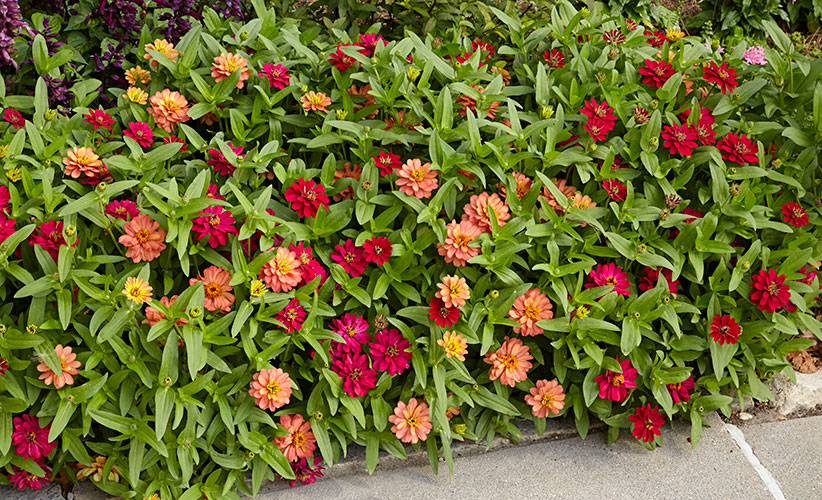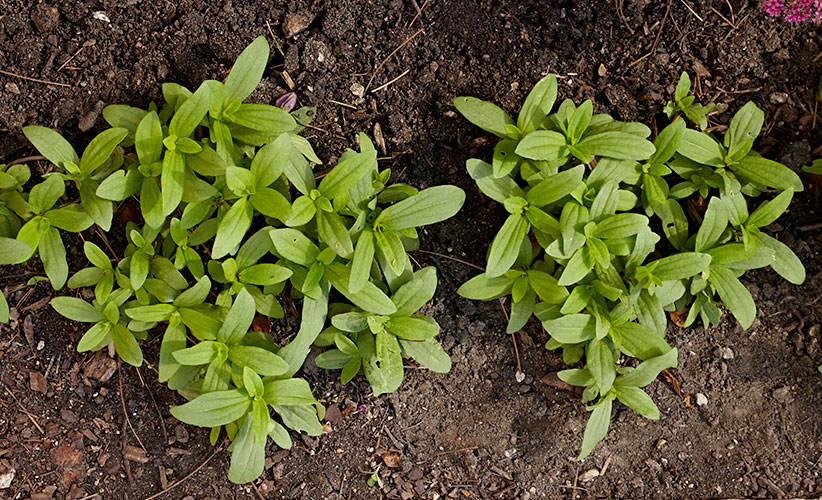Transplant zinnia seedlings when they have two sets of true leaves. Prepare the new location by loosening the soil and ensuring good drainage.
Zinnias are vibrant flowers that add color to any garden. Transplanting seedlings at the right time ensures strong growth and abundant blooms. This process typically occurs after the last frost when the soil warms up. Proper transplanting techniques help seedlings adapt to their new environment, promoting healthy development.
Zinnias thrive in full sun and well-drained soil, making them ideal for sunny borders and flower beds. Following specific steps during transplantation can enhance their growth and resilience. This guide will walk you through the best practices for successfully transplanting zinnia seedlings for a stunning display in your garden.

Credit: nosyparkerblog.com
How to Transplant Zinnia Seedlings : Step by Step Guide
Introduction To Zinnia Seedlings
Zinnias are vibrant flowers that add color to any garden. Their charm lies in their bright blooms and easy care. They attract butterflies and bees, making gardens lively. Zinnias come in many colors, including red, yellow, and pink. These flowers are perfect for borders and flower beds.
The best time for transplanting zinnia seedlings is after the last frost. This typically occurs in late spring. Wait until the soil warms up to at least 70°F. Ensure the seedlings have at least two sets of true leaves before moving them. Transplanting in the right season helps the plants thrive.

Credit: www.gardengatemagazine.com
Starting Right: Seedling Care
Watering is vital for healthy zinnia seedlings. Keep the soil moist but not soggy. Water early in the morning or late in the evening. This helps prevent disease and promotes strong roots.
Light plays a big role in growth. Zinnias need full sun for at least 6 hours daily. A sunny window or outdoor spot works best. Temperature should stay between 70°F and 75°F for ideal growth.
| Condition | Recommendation |
|---|---|
| Watering | Moist soil, avoid sogginess |
| Light | 6 hours of full sun |
| Temperature | 70°F to 75°F |
Preparing For The Transplant
Choosing the right spot for your zinnia seedlings is crucial. Look for a sunny area. Zinnias thrive in full sunlight. They need at least six hours of sun each day. Avoid places with strong winds. Wind can damage delicate seedlings.
Soil preparation is also important. Zinnias prefer well-draining soil. Use a mix of compost and garden soil. This helps provide the necessary nutrients. Test the soil pH; it should be between 6.0 and 7.0. Add lime if the soil is too acidic.
Make sure to remove any weeds. Weeds compete for water and nutrients. Water the area before transplanting. This helps the seedlings adjust better.
The Transplanting Process
Transplanting zinnia seedlings requires gentle extraction from their original pots. Carefully hold the seedling by its leaves, avoiding the stem. This protects the delicate roots.
Use a small trowel to dig around the root ball. Make sure to loosen the soil without damaging the roots. Aim for a clean removal to minimize stress on the plant.
Once extracted, inspect the roots. If they are tightly bound, gently tease them apart. This encourages healthy growth in the new location.
Always handle roots with care. Avoid pulling or yanking, as this can cause injury. Proper handling leads to better survival rates for your zinnia seedlings.
Post-transplant Care
After transplanting, water the zinnia seedlings well. This helps them settle in. Water deeply but do not overwater. Soil should stay moist but not soggy.
Mulching is important for zinnia care. Use organic mulch like straw or wood chips. Mulch keeps the soil cool and helps retain moisture. It also prevents weeds from growing.
Fertilization supports healthy growth. Use a balanced fertilizer every few weeks. This gives your zinnias the nutrients they need. Follow the instructions on the fertilizer package.
Credit: www.growertalks.com
Troubleshooting Common Issues
Transplant shock happens when plants struggle after moving. Watering right after transplanting helps. Mulching can keep soil moist and temperature stable. Avoid over-fertilizing, as it can stress seedlings.
Preventing pests and diseases is important. Use companion planting to deter harmful insects. Regularly inspecting plants helps catch problems early. Neem oil can fight off pests without harming plants. Keeping the garden clean will reduce disease risk.
Always ensure seedlings have enough space to grow. Healthy plants are less likely to face issues. With proper care, zinnias can flourish in any garden.
Ensuring Growth And Blooming
Sunlight is essential for zinnia seedlings. They need at least 6 hours of direct sunlight daily. Too little light can cause weak growth.
Watering should be consistent. Allow the soil to dry slightly between waterings. Overwatering can lead to root rot.
Pruning helps zinnias grow bushier. Trim back any leggy stems. This encourages more blooms and healthier plants.
Deadheading is important too. Remove spent flowers to promote new growth. This will keep your zinnias blooming all season.
Beyond The Basics
Companion planting can help Zinnia seedlings grow better. Pair them with marigolds to repel pests. Basil and zinnias also thrive together, enhancing flavors in the garden.
Advanced fertilization techniques can boost growth. Use a balanced fertilizer every four weeks. Apply organic compost for extra nutrients. Water the seedlings well after fertilization to help them absorb nutrients.
Monitor the soil moisture regularly. Keep the soil moist but not soggy. This balance ensures healthy root development and vibrant blooms.
Frequently Asked Questions
How Do I Prepare Zinnia Seedlings For Transplanting?
To prepare Zinnia seedlings, ensure they are strong and healthy. Gradually acclimate them to outdoor conditions over a week. This process, known as hardening off, reduces transplant shock. Water the seedlings thoroughly before transplanting to keep their roots moist. Choose a sunny location for optimal growth.
When Is The Best Time To Transplant Zinnia Seedlings?
The best time to transplant Zinnia seedlings is after the last frost. This usually occurs in late spring when temperatures warm up. Wait until seedlings are 3 to 4 inches tall for successful transplanting. Ensure the soil temperature is consistently above 60°F for optimal growth.
How Far Apart Should I Space Zinnia Seedlings?
Space Zinnia seedlings about 12 to 18 inches apart. This distance allows for adequate air circulation and sunlight exposure. Proper spacing also helps prevent overcrowding, which can lead to disease. Larger varieties may require more space to thrive and flourish.
What Type Of Soil Is Best For Zinnia Seedlings?
Zinnia seedlings thrive in well-draining soil rich in organic matter. A sandy loam is ideal for healthy root development. Ensure the soil has a pH between 6. 0 and 7. 0 for optimal growth. Adding compost can enhance nutrient levels and improve soil structure.
Conclusion
Transplanting zinnia seedlings can be a rewarding experience. With the right techniques, you’ll ensure healthy growth and vibrant blooms. Remember to choose a suitable location, provide proper spacing, and maintain consistent care. Follow these steps for a thriving garden filled with beautiful zinnias that will brighten your outdoor space.
Happy gardening!

